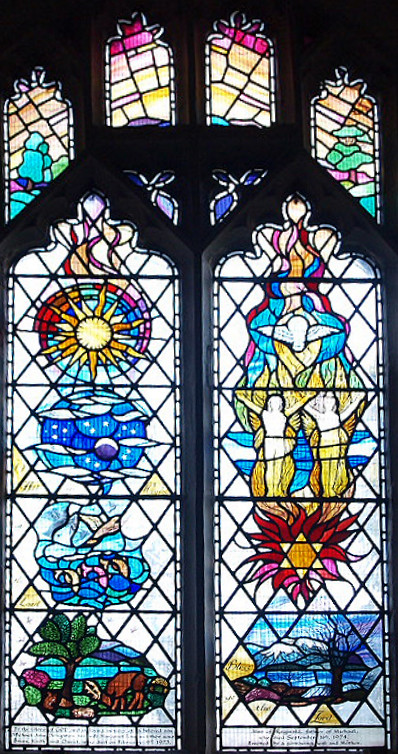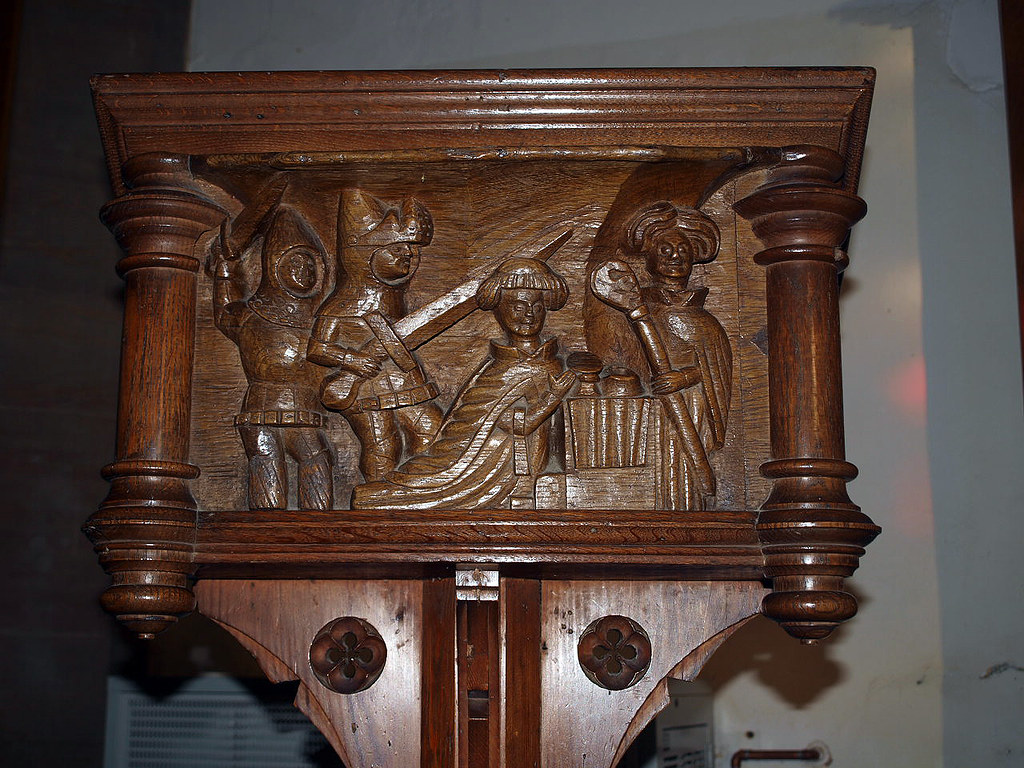ST MARTIN. Perp with a S aisle of 1870. The W tower has unusually tall two-light bell-openings with a transom and battlements with flushwork chequerboard decoration. Nave tracery with straight-sided arches. N porch of brick with a stepped gable. - FONT. Perp, octagonal, simple. - MISERICORDS. Two, re-used in lectern and reader’s desk. They represent St Martin and the Martyrdom of St Thomas Becket. - SCULPTURE. On the altar two small gilded praying putti from some Baroque altar, perhaps in Germany. - COMMUNION RAIL. Mid C17. - PLATE. Cup c. 1566. - (BRASS. To a man in academic dress; c. 1460. LG).
FORNHAM ST MARTIN. Its 15th century church has a sturdy tower, chequered at the top and with gargoyles under the battlements. There are windows with good pictures of the life of Our Lord, carved stalls, a cherub on each side of the altar, and a font carved about 500 years ago. But we remember more especially two quaint little carvings here, one of a man and a woman on horseback between two winged figures, the other of a knight beheading a lady who is kneeling between a bishop and another knight. There is an inscription to a faithful servant of the church who came to blow the organ Sunday after Sunday for 40 years, and another to Sir Harry St George Ord, who last century gave the best years of his life in the service of the Empire. It was in memory of him that his friend the Sultan of Johore built the village hall. Sir Harry was the first Colonial Governor of the Straits Settlements, and, though a man of Kent, he settled down here for the last few years of his life, which began in 1819 and ended in 1885.



No comments:
Post a Comment